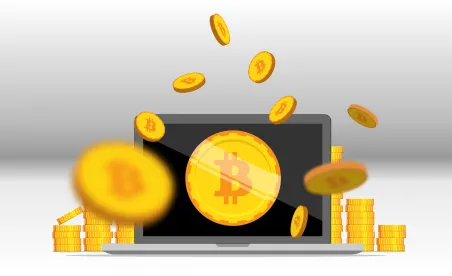On May 29, the SEC announced that it had secured injunctive relief halting an allegedly “ongoing fraud” involving an unregistered, non-exempt ICO that raised as much as $21 million in cryptoassets.
The SEC’s complaint charges Titanium Blockchain Infrastructure Services, Inc., EHI Internetwork and Systems Management, Inc. and Michael Stollery, (collectively, the “Titanium defendants”) with fraud in connection with the purchase, offer or sale of securities under Sections 10 and 17 of the Securities Exchange Act and the unregistered offer and sale of securities under Section 5 of the Securities Act.
According to the SEC, the Titanium defendants’ “scheme entailed creating their digital asset [(“BAR” and “TBAR” tokens)] for a newly conceived business; orchestrating a social media campaign based on false corporate relationships [including, egregiously, a relationship with the Federal Reserve] and false testimonials to establish a presence and seeming expertise; generating demand for their digital asset by offering various incentives and creating urgency so investors would invest in the ICO; and, after conclusion of the ICO, inflating the value of the digital asset, which was freely tradeable.”
The SEC’s position that the Titanium defendants’ token sale constituted the offer and sale of securities, which, lacking an effective registration statement or exemption from registration, violated the federal securities laws, is consistent with the stance that has been repeatedly set forth by SEC Chairman Jay Clayton and the Commission in recent months.
Moreover, the present enforcement action serves as a further reminder that the SEC remains active in their scrutiny of unregistered ICOs, especially where seemingly obvious fraud or misconduct is involved. Indeed, the SEC Enforcement Division’s persistent focus on those it considers clearly bad actors in the ICO space has been so noticeable that one commentator glibly remarked that she was “[p]retty convinced that the SEC now has a fill-in-the-blanks violations template for scammy ICOs.”
Finally, those reading tea leaves in each SEC complaint might note the following points as indicative of the SEC’s evolving understanding of the cryptoasset marketplace:
-
Rather than limit their allegations to fraud in the initial offering, the SEC’s complaint also focused on efforts by the Titanium defendants to subsequently inflate the price of their tokens on the secondary market. Such “pump and dump” (or, in present SEC parlance, “create and inflate”) schemes are a widespread problem afflicting secondary token trading markets.
-
The SEC at least tacitly acknowledged the existence of arguments that a token’s “functionality” (or lack thereof) may be a useful proxy for determining whether a token sale is subject to the registration requirements of Section 5, alleging that “although BAR was characterized in the TBIS whitepapers as a ‘utility token,’ it did not have any functionality at the time of the ICO (nor does it currently), and was sold as an investment.” However, using functionality as a basis for concluding that a token is not a security remains problematic in light of the SEC’s statement in paragraph 35 of Munchee (“Even if MUN tokens had a practical use at the time of the offering, it would not preclude the token from being a security.”)
-
For the first time in a complaint, the SEC described a new term for characterizing cryptoassets – “digital assets” – or ICO tokens that:
entitle holders to certain rights related to a venture underlying the ICO, such as rights to profits, shares of assets, rights to use certain services provided by the issuer, and/or voting rights. These digital assets may also be listed on online platforms, often called virtual currency exchanges, and tradeable for virtual or fiat currencies. Often, the digital assets are immediately tradeable.
So marks the latest chapter in the SEC’s efforts at ICO regulation by enforcement. We will continue to monitor for subsequent developments.



 />i
/>i
